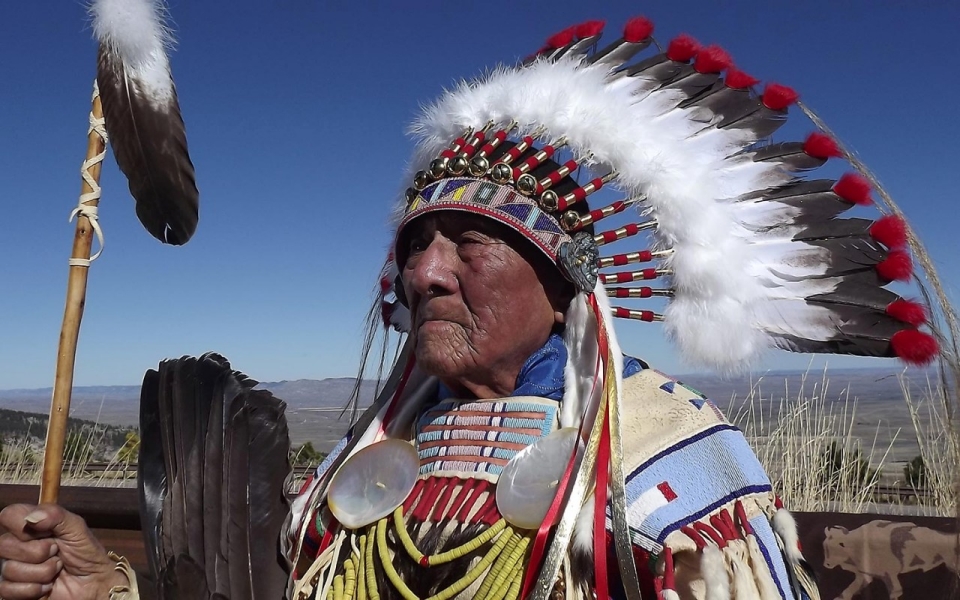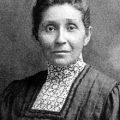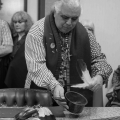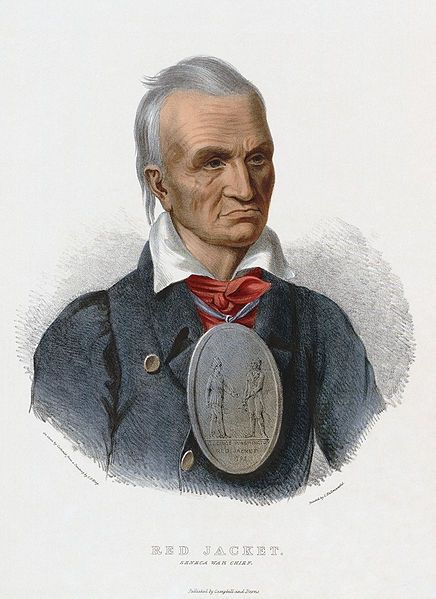
Joseph Medicine Crow, a Crow tribal historian and elder, has crossed over at the age of 102. The Crow, who currently have a small reservation in Montana, were at one time at least three separate, distinct, and autonomous groups: the River Crow who ranged north of the Yellowstone River, the Mountain Crow who live south of the Yellowstone and farther west, and the Kicked-in-the-Bellies (also known as Home-Away-from-the-Center) who lived in the same area as the Mountain Crow.
The Crow
The Crow were once a part of the Hidatsa living near the Missouri River. Archaeologists suggest that the Crow moved out onto the Great Plains in two migrations. The Mountain Crow moved out first, about 1550. Then a century later, the River Crow followed them.
Crow historian and elder Joseph Medicine Crow, in We, The People: Of Earth and Elders—Volume II, describes the Crow migrations this way:
“Way back in the 1500s, what might be called our ancestral tribe, lived east of the Mississippi in a land of forests and lakes, possibly present day Wisconsin. They began migrating westward around 1580 until they crossed the Mississippi to follow the buffalo. As far as the Crows are concerned, they separated from this main band in about 1600-1625.”
According to one oral tradition, there was a buffalo hunt at which the wives of two of the chiefs argued over the upper stomach of one of the cows. There was a scuffle and one of the women was killed. This escalated into a skirmish between the two bands led by the chiefs, and several more people were killed. As a result, one band left the Missouri and migrated to the Rocky Mountains. The band that followed along the rivers and streams came to be known as the River Crow (They Travel Along the Riverbanks) and the other band became known as the Mountain Crow. The Mountain Crow later divided and the Kicked-in-the-Bellies appeared.
Another oral tradition tells that at one time there was a wandering tribe under the leadership of two brothers: No Intestines and Red Scout. At what is now called Devil’s Lake, they did a vision quest together. During the vision, No Intestines was told to search for the seeds of the sacred tobacco and Red Scout was told to settle on the banks of the Missouri River and grow corn. No Intestines led his people to many parts of the Great Plains in search of the sacred tobacco seeds.
The oral tradition tells of the Great Salt Lake, the geothermal features of Yellowstone National Park, of the Arkansas River in Oklahoma, and of the plains of Alberta, Canada. Finally, at Cloud Peak, the highest crest in the Bighorn Range, No Intestines received another vision and thus the Crow made their home in Montana and Wyoming with the Bighorn Mountains as their heartland.
The oral traditions also tell of another group of Crow—Bilápiiuutche, Beaver Dries Its Fur—which became lost during the journey. Several explanations are offered for the fate of this group. Some feel that it split in Canada and remained there. Others say it turned east and ended up at Lake Michigan. Still others feel that Beaver Dries Its Fur became a part of the Kiowa who were closely associated with the Crow.
Joe Medicine Crow
Joseph Medicine Crow was born on October 27, 1913 on the Crow Reservation near Lodge Grass, Montana. His father was Leo Medicine Crow and his mother was Amy Yellowtail.
He attended Linfield College in McMinnville, Oregon, graduating in 1938. He then went to the University of Southern California where he earned a master’s degree in anthropology in 1939. His master’s thesis was on the effect of European culture on Native Americans. He then completed his coursework for his Ph.D. and started writing his doctoral dissertation in 1940. However, international events interfered with his ability to complete his doctorate.
Like many Crow tribal members, Joe Medicine Crow served in the army in World War II. Among the Crow, the concept of “chief” really means “good, valiant”. To achieve this title a person had to perform four deeds: (1) to lead a successful raid, (2) to capture a horse tethered in an enemy camp, (3) to be the first to count coup, and (4) to take a weapon from a live enemy. Serving in Europe during World War II, Joe Medicine Crow performed these deeds and earned the status of war chief. To meet the second requirement, he stole 50 horses from a German SS camp.
As the Crow Nation tribal historian, Joe Medicine Crow collected oral histories. As an oral historian, he was the last living person to have heard direct oral accounts from the Crow warriors who were at the 1876 Battle of the Little Bighorn where Lt. Colonel George Armstrong Custer was defeated by the Sioux and Cheyenne. His step-grandfather, White Man Runs Him, was one of Custer’s scouts.
In 2003, the University of Southern California awarded Joe Medicine Crow an honorary doctorate. In 2009, he was awarded the Medal of Freedom by President Obama for his service during World War II and his works on Native American history.




Leave a Reply